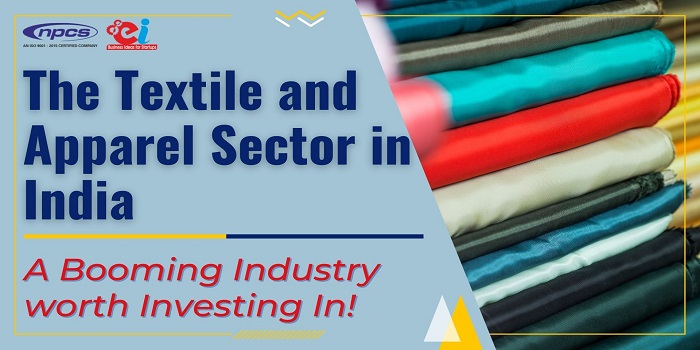The Textile and Apparel Sector in India is not just an economic powerhouse but a deep-rooted cultural and historical entity. From the ancient cotton looms of the Indus Valley Civilization to today’s cutting-edge textile parks and global fashion exports, India’s textile industry has evolved dramatically while retaining its artisanal heritage. It is one of the largest contributors to India’s GDP, export earnings, and employment generation, especially among women and rural communities.
As of 2024, the Indian textile and apparel industry is valued at USD 160 billion and is projected to reach USD 350 billion by 2030, driven by rising domestic consumption, global demand, and robust policy support under initiatives like ‘Make in India’, PLI Scheme, and PM MITRA Parks.
Visit this Page for More Information: Start a Business in Textile Industry
Significance of the Textile and Apparel Sector in India
The Indian textile sector is unique due to its complete value chain — from raw fiber to finished garments — all within the country. It is also one of the few industries that is deeply interwoven with India’s history, culture, agriculture, and rural economy.
Read Similar Articles: Textile Industry
Key Highlights:
-
Second largest employer after agriculture, employing over 45 million people.
-
Accounts for 2.3% of India’s GDP, 13% of industrial production, and 12% of export earnings.
-
India is the largest producer of cotton, second-largest producer of silk, and third-largest exporter of textiles globally.
1. Key Segments of the Indian Textile Industry
a. Natural Fibers Segment
India is a global leader in natural fibers like:
-
Cotton (40% of total production)
-
Jute (dominant globally)
-
Silk (especially Tussar, Mulberry)
-
Wool
b. Synthetic
Rapidly growing due to demand in sportswear, uniforms, and technical textiles:
-
Polyester
-
Viscose
-
Nylon
-
Acrylic
c. Apparel and Garments
Ready-made garments (RMG) are a major export item, with hubs in:
-
Bengaluru
-
Tirupur
-
Ludhiana
-
Delhi-NCR
-
Mumbai
d. Home Textiles
Includes bed linen, curtains, carpets, bath towels, and furnishing fabrics — an export-dominant segment.
e. Technical Textiles
Used in medical, automotive, defense, agriculture, and construction industries. Government is pushing this through the National Technical Textile Mission.
Read our Books Here: Textile Spinning
2. India’s Position in the Global Textile Market
-
Largest exporter of cotton and jute
-
Among the top 5 exporters of RMG, home textiles, and handlooms
-
Indian brands like Raymond, Arvind, FabIndia, Biba, and Manyavar have global recognition
-
Key export markets: USA, EU, UAE, UK, Bangladesh, and Japan
India’s textile exports were valued at over USD 40 billion in FY 2023–24, with strong projections in 2025 due to global demand shifts from China to India.
3. Government Policies Supporting Textile Growth
a. PLI Scheme for Textiles
?10,683 crore approved to incentivize MMF and technical textiles manufacturing with 5-year subsidies for performance-linked output.
b. PM MITRA Textile Parks
Seven mega textile parks are being developed to provide integrated facilities for spinning, weaving, dyeing, printing, and garmenting under one roof.
c. RoDTEP and RoSCTL Schemes
Duty remission schemes to support textile exports by refunding embedded taxes and levies.
d. Skill India & Samarth Scheme
Focused on training over 10 lakh workers, especially women, in textile-related skills for better productivity and employability.
4. Challenges Faced by the Textile and Apparel Sector in India
Despite its strength, the Textile and Apparel Sector in India faces several hurdles:
-
Dependence on cotton makes it vulnerable to weather patterns
-
Lack of scale and outdated technology in smaller units
-
Inconsistent supply chain between fiber and finished product
-
High logistics and compliance cost
-
Low penetration of high-value products like branded apparel and technical textiles
However, reforms in infrastructure, digitalization, and export facilitation are addressing many of these pain points.
Related Feasibility Study Reports: Textile, Apparel, Clothing, Denim wear, Innerwear
5. Rise of Sustainable and Ethical Fashion
Sustainability is becoming a defining trend in India’s apparel exports and domestic consumption. Brands are turning to:
-
Organic cotton and khadi
-
Recycled fabrics
-
Plant-based dyes
-
Eco-friendly packaging
Consumers are increasingly demanding fair trade, low-carbon, and zero-waste products. This is opening new avenues for ethical textile businesses and startups.
6. Digital Transformation in Indian Textiles
India’s textile value chain is embracing digital tools:
-
CAD software for apparel design
-
ERP and SCM platforms for supply chain management
-
E-commerce portals like Myntra, Ajio, Amazon Fashion for direct sales
-
Blockchain for transparency in sourcing and labor practices
-
AI & ML in demand forecasting and inventory optimization
Digitalization is helping traditional players scale up, improve efficiency, and compete globally.
7. Key Textile Hubs in India
Northern India:
-
Ludhiana – Woolen garments
-
Panipat – Home furnishings
-
Delhi-NCR – Fashion and fast-moving apparel
Southern India:
-
Tirupur – Knitwear exports hub
-
Coimbatore – Yarn and spinning mills
-
Bengaluru – High-end fashion apparel
Western India:
-
Surat – Synthetic fabrics and embroidery
-
Ahmedabad – Cotton textiles and printing
-
Mumbai – Apparel exports and design
Eastern India:
-
Bhubaneswar and Kolkata – Jute and handloom
-
Assam and Tripura – Silk and traditional weaves
8. Opportunities for Entrepreneurs and Investors
-
Branding ethnic and regional weaves like Banarasi, Chikankari, or Pochampally
-
Export-oriented garment factories
-
Sustainable fashion startups
-
Private label manufacturing for global brands
-
Value-added home décor textiles
-
Smart textiles and wearable tech integration
With FDI allowed up to 100% under automatic route, international investors are also keen on Indian textile ventures.
Conclusion
The Textile and Apparel Sector in India is poised for a golden era of growth, innovation, and sustainability. With deep-rooted craftsmanship, a massive workforce, and growing global demand, India holds the potential to reclaim its historical title as the “textile capital of the world.”
Entrepreneurs, exporters, fashion designers, and investors can all find exciting opportunities in this dynamic industry — whether through high-value garments, eco-textiles, or global collaborations.
Download PDF: The Textile and Apparel Sector in India: A Booming Industry worth Investing In!
Government Ministry/ Department
- Development Commissioner (Handicrafts)
- Jute Commissioner
- Ministry of Textiles
- Office of Development Commissioner (Handlooms)
- Office of the Textiles Commissioner
- Textiles Committee
Industry Scenario
- Apparel Export Promotion Council
- Clothing Manufacturing Association of India
- Confederation of Indian Textile Industry
- Indian Technical Textiles Association
- National Council of Textile Organizations
- Textile Associations of India
- Textile Machinery Manufacturers’ Association
- Start a Business in Asia
- Start a Business in Potential Countries for Doing Business
- Best Industry for Doing Business
- Business Ideas with Low, Medium & High Investment
- Looking for Most Demandable Business Ideas for Startups
- Startup Consulting Services
- Start a Business in Africa
- Start a Business in India
- Start a Business in Middle East
- Related Videos
- Related Books
- Related Projects
- Related Market Research Reports
NIIR PROJECT CONSULTANCY SERVICES, DELHI
An ISO 9001:2015 Company
ENTREPRENEUR INDIA
106-E, Kamla Nagar, Opp. Mall ST,
New Delhi-110007, India.
Email: npcs.ei@gmail.com
Tel: +91-11-23843955, 23845654, 23845886
Mobile: +91-9097075054, 8800733955
Website: https://www.entrepreneurindia.co
https://www.niir.org






